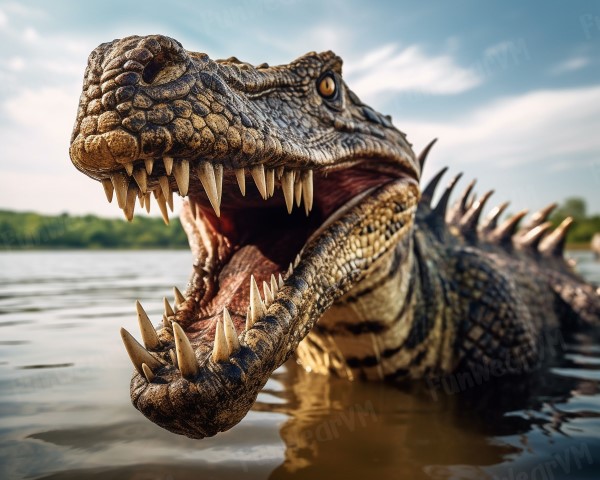
The Bear Lake Monster is a mythical creature that is said to inhabit the waters of Bear Lake, a natural lake that spans the border between Utah and Idaho. The legend of the monster dates back to the 19th century, when Mormon settlers in the area reported seeing a huge serpent-like animal with legs and spikes along its back. Some even claimed that there were more than one of these monsters, and that they could swim faster than a locomotive. But is there any truth to these stories, or are they just folklore and imagination?
The origin of the legend
The first written account of the Bear Lake Monster was published in the Deseret News on July 31, 1868, by Joseph C. Rich, a Mormon colonizer and journalist who lived near the lake. He wrote that “the Indians have a tradition concerning a strange, serpent-like creature inhabiting the waters of Bear Lake” and that “a number of our white settlers declare they have seen it with their own eyes”. He then proceeded to describe several sightings of the creature by different witnesses, who gave varying descriptions of its appearance and size. Some said it had a head like a cow, otter, crocodile or walrus, while others said it had no head at all. Some said it was 40 to 50 feet long, while others said it was much smaller. Some said it had legs about 18 inches long, while others said it had none. Some said it had spikes along its spine, while others said it was smooth. Rich concluded his article by saying that “the monster question is becoming an exciting one” and that “we hope that some enterprising individual will soon be able to determine its shape, size, habits, tastes and propensities”.
Rich’s article sparked a lot of interest and curiosity among the public, especially in Salt Lake City, where many people believed that the monster was real and wanted to see it for themselves. The Deseret News continued to publish articles about the monster, sometimes skeptically and sometimes defensively, while other local newspapers mocked and ridiculed the stories. The legend also caught the attention of Brigham Young, the second president of The Church of Jesus Christ of Latter-day Saints, who visited the area on preaching tours and spoke with some of the locals who claimed to have seen the monster. He reportedly found their testimonies to be credible and sincere, but he did not fully endorse the existence of the creature. He suggested sending a rope to the lake to try to capture it and see what it was.
The legend also spread among the Native Americans who lived near the lake, who had their own traditions and stories about water spirits and monsters. Some of them believed that the monster was a manifestation of an evil spirit called Isabella, who had been banished to the lake by their ancestors for her wickedness. Others believed that the monster was a guardian of the lake who protected its resources and punished those who harmed them.
The decline and revival of the legend
The legend of the Bear Lake Monster reached its peak in popularity in the late 1860s and early 1870s, but then gradually faded away as no conclusive evidence or capture of the creature was ever reported. In 1874, Joseph C. Rich admitted that he had made up most of his stories about the monster as a joke and a hoax to attract attention and tourism to the area. He said that he was surprised by how seriously people took his articles and how far they spread. He apologized for his deception and said that he hoped that people would forgive him for his “youthful folly”.
However, Rich’s confession did not completely end the legend, as some people still believed that there was something mysterious in the lake, or at least enjoyed telling stories about it. Over the years, there have been occasional reports of sightings or encounters with the monster by locals or visitors, but none of them have been verified or documented. The last reported sighting was in 2002, when a man named Brian Hirschi claimed that he saw a large dark shape rise out of the water near his boat and splash back down.
The legend of the Bear Lake Monster has also been kept alive by various books, articles, documentaries, movies and TV shows that have featured or mentioned it. Some of them have portrayed it as a real animal that could be explained by science or cryptozoology, while others have portrayed it as a supernatural or mythical being that could be linked to folklore or religion.
Some have speculated that the monster could be a remnant of an ancient species, such as a plesiosaur or a mosasaur, that somehow survived in the lake. Others have suggested that it could be related to other lake monsters around the world, such as Nessie or Champ. Some have even proposed that it could be an optical illusion caused by waves, logs or other natural phenomena.
Whatever the truth may be, the legend of the Bear Lake Monster remains a fascinating part of Utah and Idaho folklore and culture. It has inspired books, movies, songs and festivals, and has become a tourist attraction for visitors who want to experience the mystery and beauty of Bear Lake.
References:
